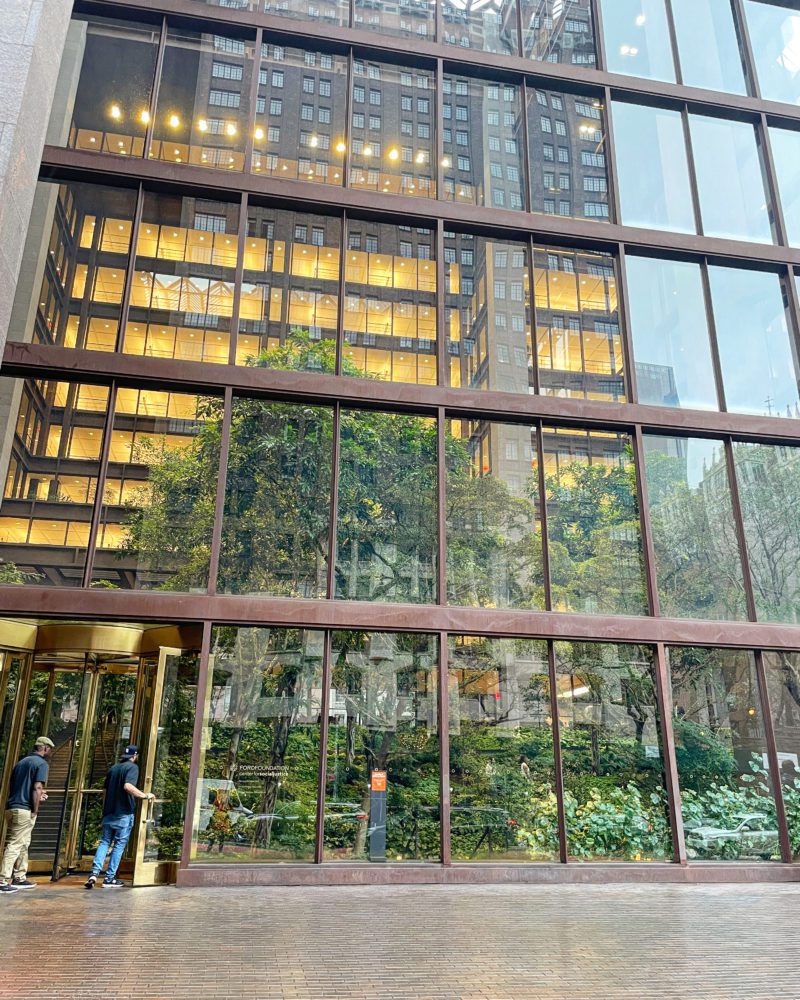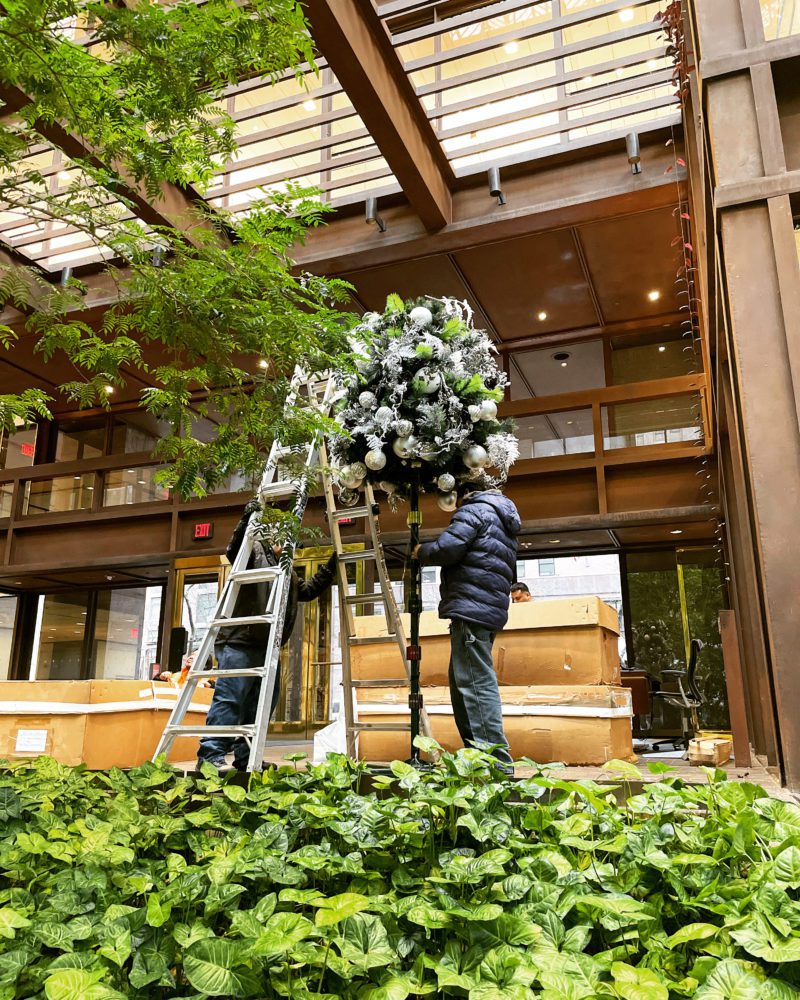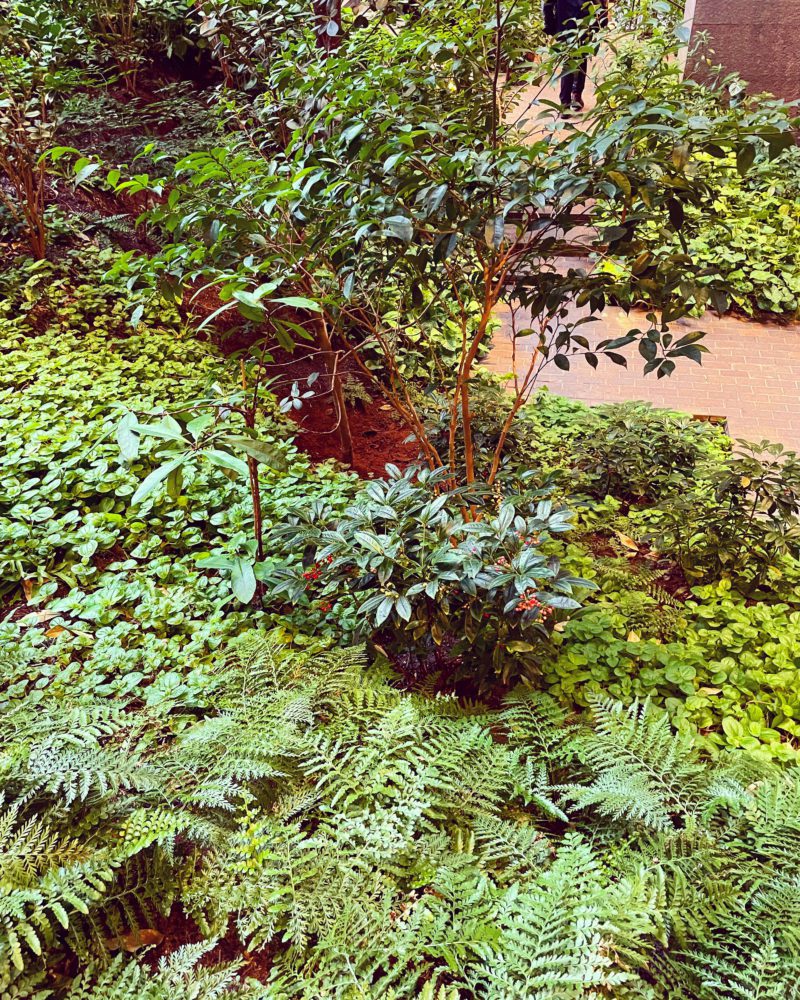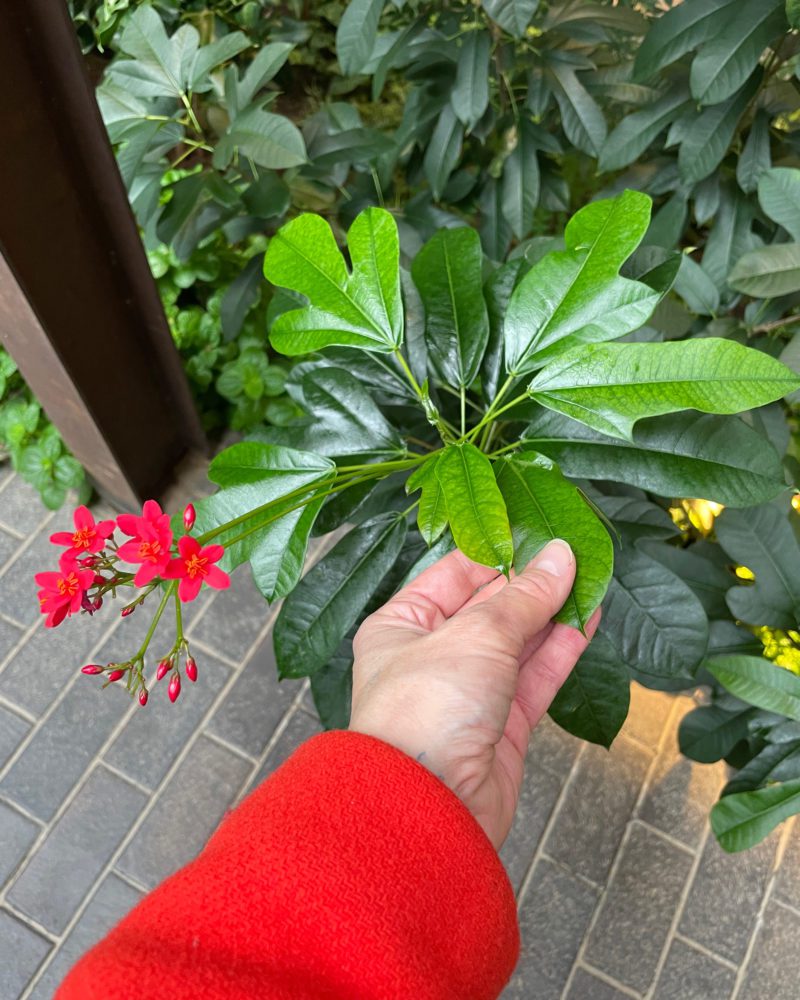
There are few places I’ve been in New York City—apart, perhaps, from the city’s most socially distant spot, in the middle of the Staten Island Greenbelt—where I’ve felt as present and calm as I did the moment I walked into the atrium of the Ford Foundation building one morning at the start of the New Year.

Trees in the free public garden soar twelve stories toward a glass ceiling, where natural light filters in, encirled by the glass-windowed hallways of the foundation’s offices.

The garden—home to more than forty species of plants, and designed by Dan Kiley—is intended to be accessible to the blind and disabled, and provides a wheelchair ramp to a Sensory Garden. The strip of waist-level plantings features a recorded audio introduction and braille signage, as well as the opportunity to interact with the plants by touch and smell.

Though landscapers are diligently weeding and pruning in all corners of the garden, one sees evidence of the plant life creeping into the office landscape, such as vine tendrils dangling like wind chimes from the upper balconies, a whiteboard visible in the window behind them.

As I descend into the garden, a slight breeze—but from where?—brushes my cheek and rustles the leaves around me. I feel a surge of of oxygen fill my lungs, along with the smell of fertile soil. It feels as if I am entering an outdoor space, one surrounded by granite and steel. The midcentury Ford Foundation building occupies an almost perfect square footprint on the block between Forty-Second and Forty-Third Streets and First and Second Avenues.

In the lobby area off Forty-Third Street, a small crew is preparing to dismantle an artificial Christmas tree at the end of the holiday season. The tendrils of a nearby garden tree almost brush the Christmas tree’s plastic leaves and silver baubles, and the ground cover creeps toward the pile of jumbo faux gifts at its base.

As the workers unfold their ladders and began climbing to the top of the tree, I head down the ramp toward sensory garden. At the press of a button, a three-minute recording introduces the “tactile scented experience” of the garden and encourages me to “read the landscape” through “texture, volume, light, form, and fragrance,” describing each plant’s signature texture and smell. The plant bed adjacent to the speaker is admittedly a little sparse this January morning, but with the recording’s encouragement, I find a stiff, sharp-edged stalk of lemongrass and close my eyes, pinching it between my fingers. It snaps in half, releasing an astringent citrus scent.

Next I find bristly rosemary, and as I shear some sprigs from its woody stem, its resinous, piney fragrance sticks to my fingertips.

I follow the path down to the reflecting pool, which shimmers at the bottom of the garden, mirroring the wall of windows looking out over Forty-Second Street.

The pool features a “reverberating fountain” feature that amplifies the sounds of the garden for the benefit of the blind. Unfortunately, there’s no seating (and when I sit on the stairs, I’m shooed away by a sharp-eyed guard), but as I circle the pool, I hear the rustling leaves and shiftings of branches overhead magnified, as if they were being poured directly into my ear. The slight movements send ripples across the water’s surface.

From the edge of the pool, I look up toward the lobby and notice that work on the Christmas tree has progressed. There are now cardboard boxes, and the tree has been all but denuded except for its crown, still bedecked in ornaments, like an otherwise-naked man wearing a pompom ski cap and goggles.

In contrast, the garden around me teems with life. The leaves are smooth, waxy, downy, serrated, striated like corduroy, lacy, prickly. Their moisture is palpable, and the stillness of the garden is amplified by the minute shiftings of plant life.

The audio recording pointed out several of the plants, to allow non-sighted visitors to experience them through all the senses. These included Kramer’s supreme, which has “thick dark green glossy leaves with serrated edges and large red flowers with smooth petals”; heavenly bamboo, which has “small fine-textured medium-green leaves on delicate branches with bright red berries”; as well as jasmine, with “delicate, shiny deep-green foliage”; and two types of mint: chocolate, with a smell “like the classic Girl Scout cookie,” and spearmint “the sweetest scent of all the mints.”

I saunter up and down the brick pathway, breathing in the air and soaking up the energy, a rare combination of stillness and movement. The guards patrol the perimiter, and the workers at the top are now wrangling the Christmas tree into a box. The screech of masking tap unfurling and the aluminum ladder clanking closed contrast with the leaves and the faint tinkle of the security guards’ Bluetooth speaker, playing soft rock from the hospitality desk.

The workers fold their ladders. The tree is slipped into its cardboard box for next year. Standing by the windows, I see the plants reaching toward the glass, toward the winter light.



 Sense & the City is a monthly blog exploring the hidden corners of New York City. Each month’s post is devoted to one of the five senses. Receive daily sensory impressions via Instagram @senseandthecity.
Sense & the City is a monthly blog exploring the hidden corners of New York City. Each month’s post is devoted to one of the five senses. Receive daily sensory impressions via Instagram @senseandthecity.

